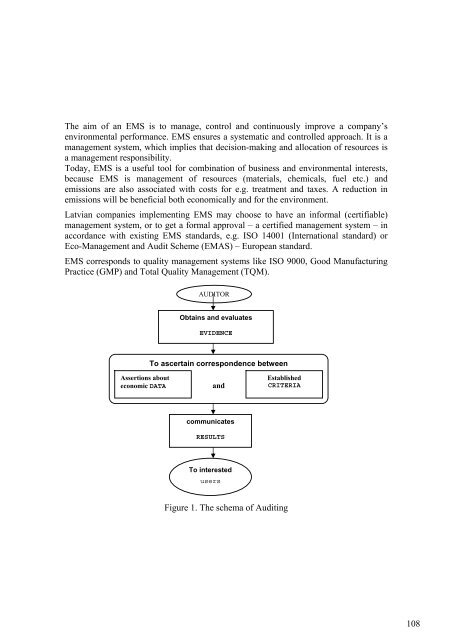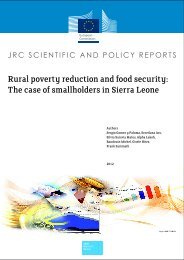(DG JRC/IPTS) - agrilife - Europa
(DG JRC/IPTS) - agrilife - Europa
(DG JRC/IPTS) - agrilife - Europa
You also want an ePaper? Increase the reach of your titles
YUMPU automatically turns print PDFs into web optimized ePapers that Google loves.
The aim of an EMS is to manage, control and continuously improve a company’s<br />
environmental performance. EMS ensures a systematic and controlled approach. It is a<br />
management system, which implies that decision-making and allocation of resources is<br />
a management responsibility.<br />
Today, EMS is a useful tool for combination of business and environmental interests,<br />
because EMS is management of resources (materials, chemicals, fuel etc.) and<br />
emissions are also associated with costs for e.g. treatment and taxes. A reduction in<br />
emissions will be beneficial both economically and for the environment.<br />
Latvian companies implementing EMS may choose to have an informal (certifiable)<br />
management system, or to get a formal approval – a certified management system – in<br />
accordance with existing EMS standards, e.g. ISO 14001 (International standard) or<br />
Eco-Management and Audit Scheme (EMAS) – European standard.<br />
EMS corresponds to quality management systems like ISO 9000, Good Manufacturing<br />
Practice (GMP) and Total Quality Management (TQM).<br />
Assertions about<br />
economic DATA<br />
AUDITOR<br />
Obtains and evaluates<br />
EVIDENCE<br />
To ascertain correspondence between<br />
and<br />
communicates<br />
RESULTS<br />
To interested<br />
users<br />
Established<br />
CRITERIA<br />
Figure 1. The schema of Auditing<br />
108

















